Sounds beyond music
Earlier this month, a new exhibit opened in the library’s First Floor mezzanine display space. Sounds Beyond Music: Selected Objects from the Museum of Portable Sound will run from 13 November through 31 January.
So, what is the Museum of Portable Sound?
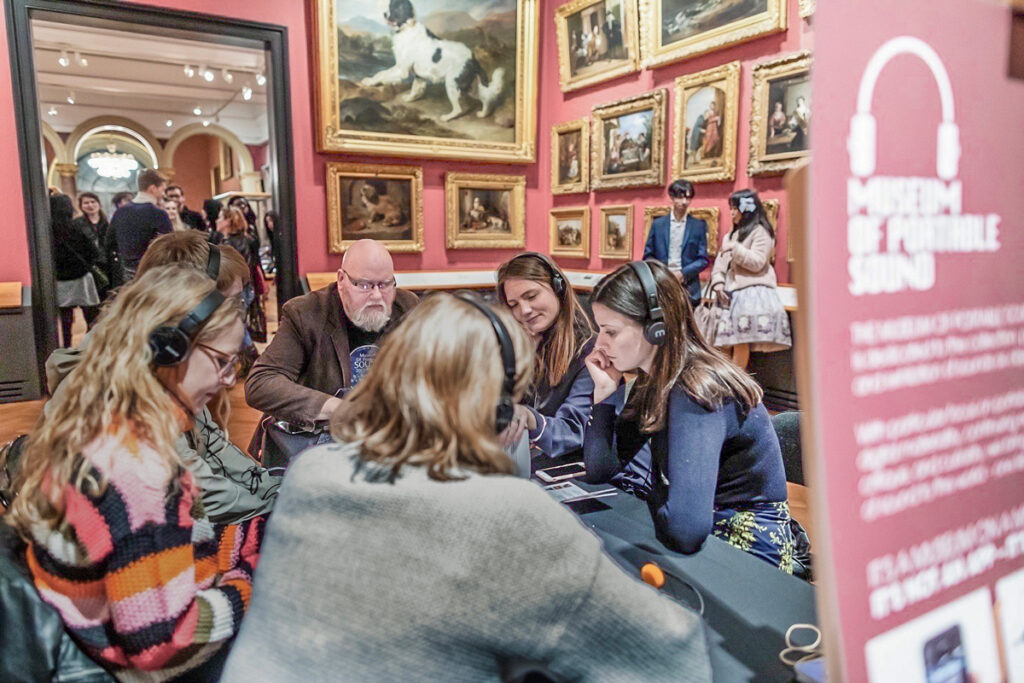
MOPS is an independent museum based in Portsmouth after first opening in London almost exactly eight years ago as a research project for my PhD in sound studies and museum studies, and I’m its Director and Chief Curator. It’s dedicated to the collection, preservation, and exhibition of (mostly non-musical) sounds as museum objects.
MOPS began as a collection of sounds (most of which are recordings I’ve made myself around the world) that can only be heard on one specific mobile phone (an Apple iPhone 4S that hasn’t been upgraded since the museum opened in 2015). Visitors book an appointment in-person or online, and when we meet I give them the mobile, a museum map, and a 300-page Gallery Guide book that contains all the object labels, photos, and other information you usually see on the walls of a more traditional museum.
And then we sit there while they listen to my phone.
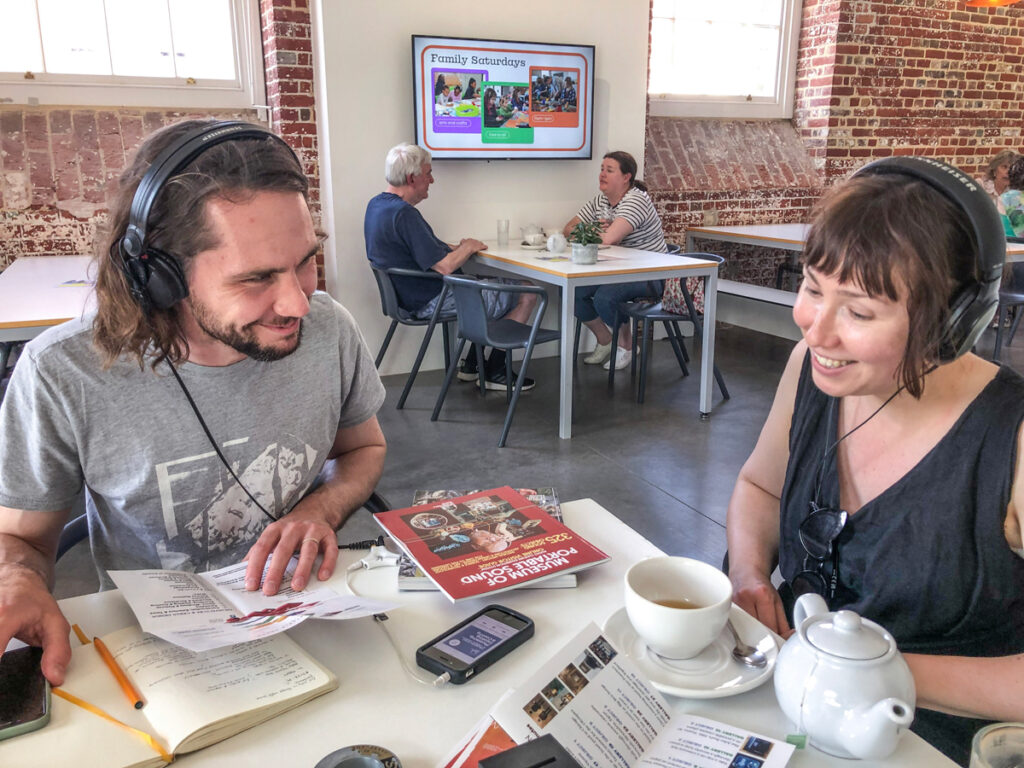
What usually ends up happening is we talk. A lot…about the sounds in the museum, but also we end up sharing our own experiences of hearing and listening to the world around us. Often, the visitors will make suggestions for sounds I could add, or share information I’ve missed in the Gallery Guide, or things I could do differently – and I often implement their suggestions.
It might seem bizarre that I don’t put the sounds online, that there’s no app to download, that I force people to meet me personally, but that’s all very intentional. MOPS isn’t just a museum about sound, it also questions what museums are. Most museums never let you meet the director; if you have a complaint about how they present their information, there’s never anyone accountable to talk to – and very often museums use their “institutionality” so that there are no individual people responsibie when a particular display seems too culturally insensitive or colonialist.
I wanted to create a museum whose form represented what I believe museums should be: continuously changing collections made by people who have the ability – and the responsibility – to use those collections to discuss plainly and truthfully all the things, good and bad, that human beings are capable of.
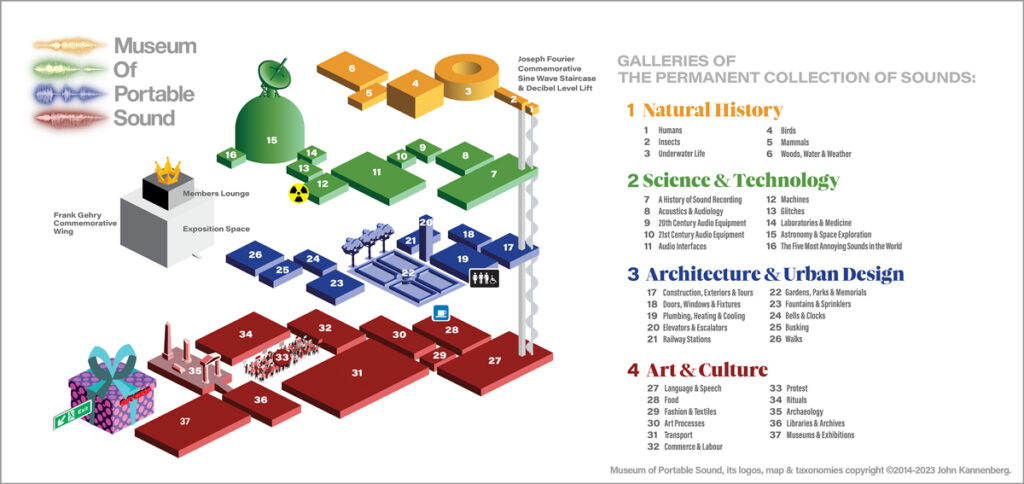
Although MOPS began as a collection sound recordings, over the years I’ve also acquired a sizeable collection of physical objects, a two thousand-title and still growing research library, and dozens of hours of digital videos about sound.
During the COVID-19 pandemic, I was no longer able to meet people face to face. The physical objects collection became a great way to keep the museum alive on social media through sharing images and videos of old sound technologies and other cultural artefacts that make or are related to sound and listening. This UoP Library exhibit presents a little over forty of my favourite objects, thematically grouped into five shelves:
- Can a Sound be an Object?
What happens when sounds are displayed the same way museums display physical stuff? - Replaced by Smartphones
What are some of the old technologies that smartphones have made obsolete – and is that always a good thing? - Aural Diversity
Is it even scientifically possible for there to be an “average” listener? How can we be more inclusive of the diversity present within human hearing? - #CassetteCulture
Why are we still fascinated by the Compact Cassette invented in 1963? - Playing With Sounds
Non-musical sounds are often fun (and maybe even a little childish) – so why do we often stop finding sound fun as we grow older?
There’s also an example of the world’s first electric white noise machine (on display M-F 9am – 1:30pm) that you can listen to in person!
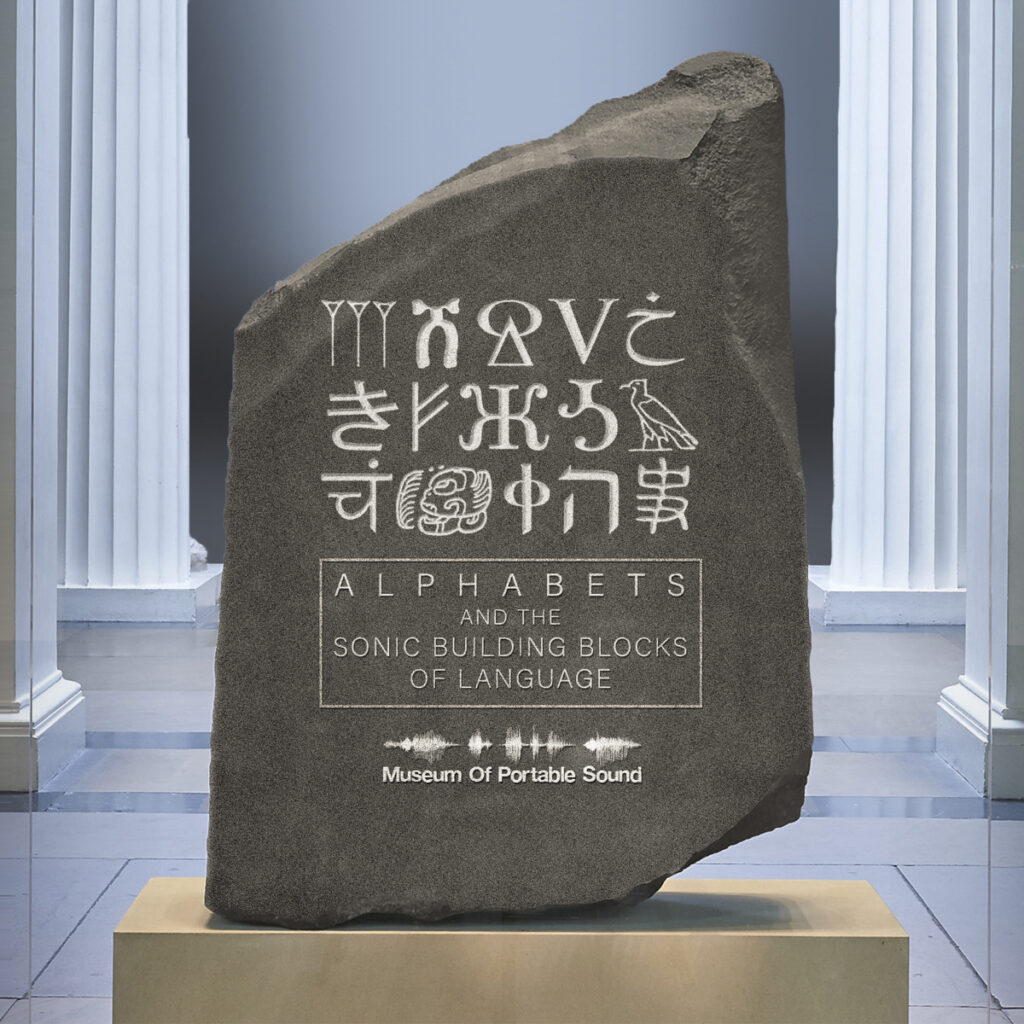
A series of four large posters also present an overview of the sound recordings in the MOPS Permanent Collection of Sounds, and you can even contribute to our ongoing project ALPHABETS and the Sonic Building Blocks of Language by reciting the ABCs (or the characters of another writing system) in your native language – just send us a voice message using the QR code on the poster!
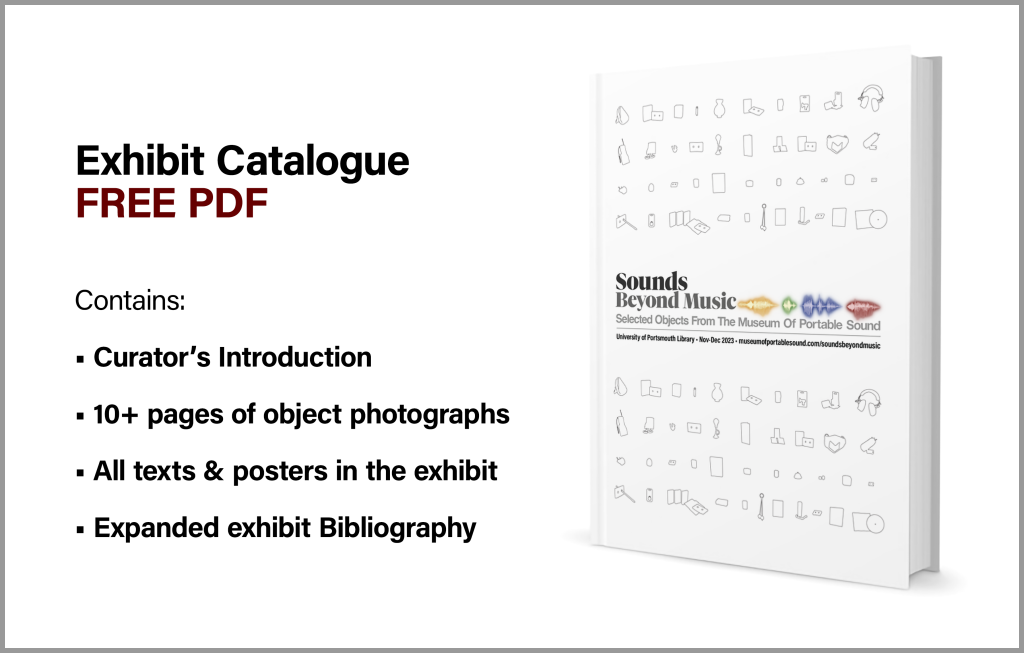
I’ve also put together a free PDF catalogue of all the texts and posters in the show, photos of all the objects, and an expanded exhibit Bibliography and Further Reading List if your curiosity’s been piqued.
Many thanks to everyone at the library who’ve helped put this exhibit together!
Museum of Portable Sound Director & Chief Curator
UoP Library Assistant
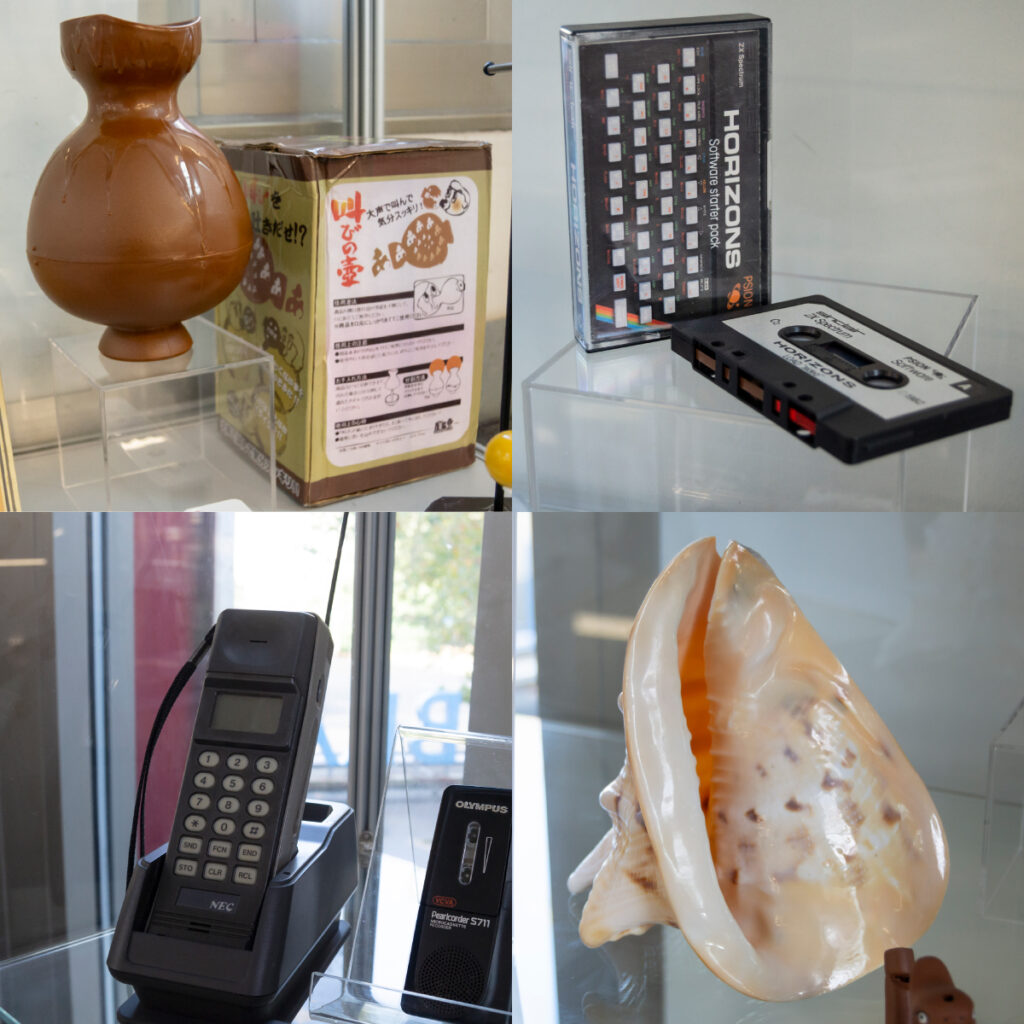




Leave a Comment (note: all comments are moderated)